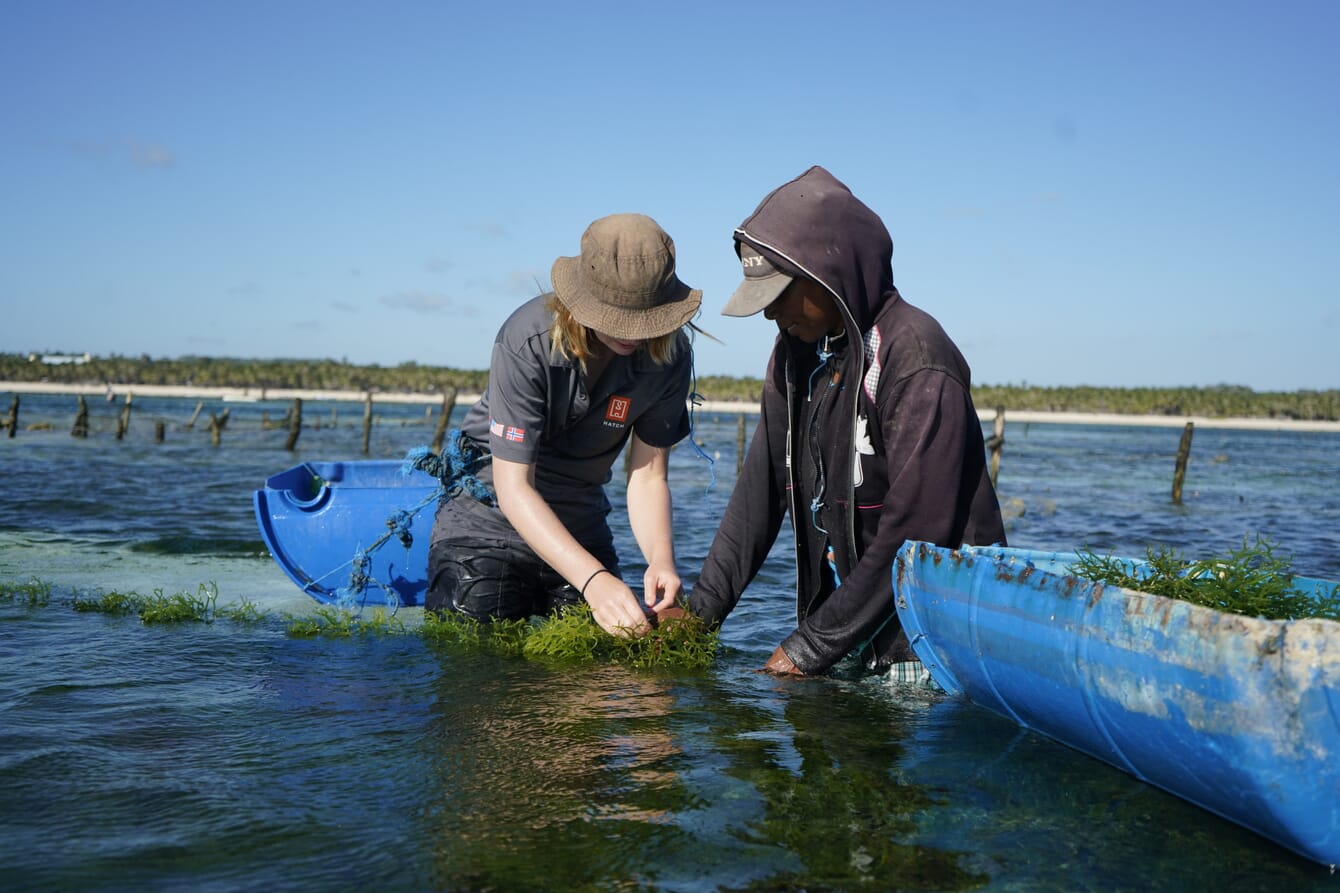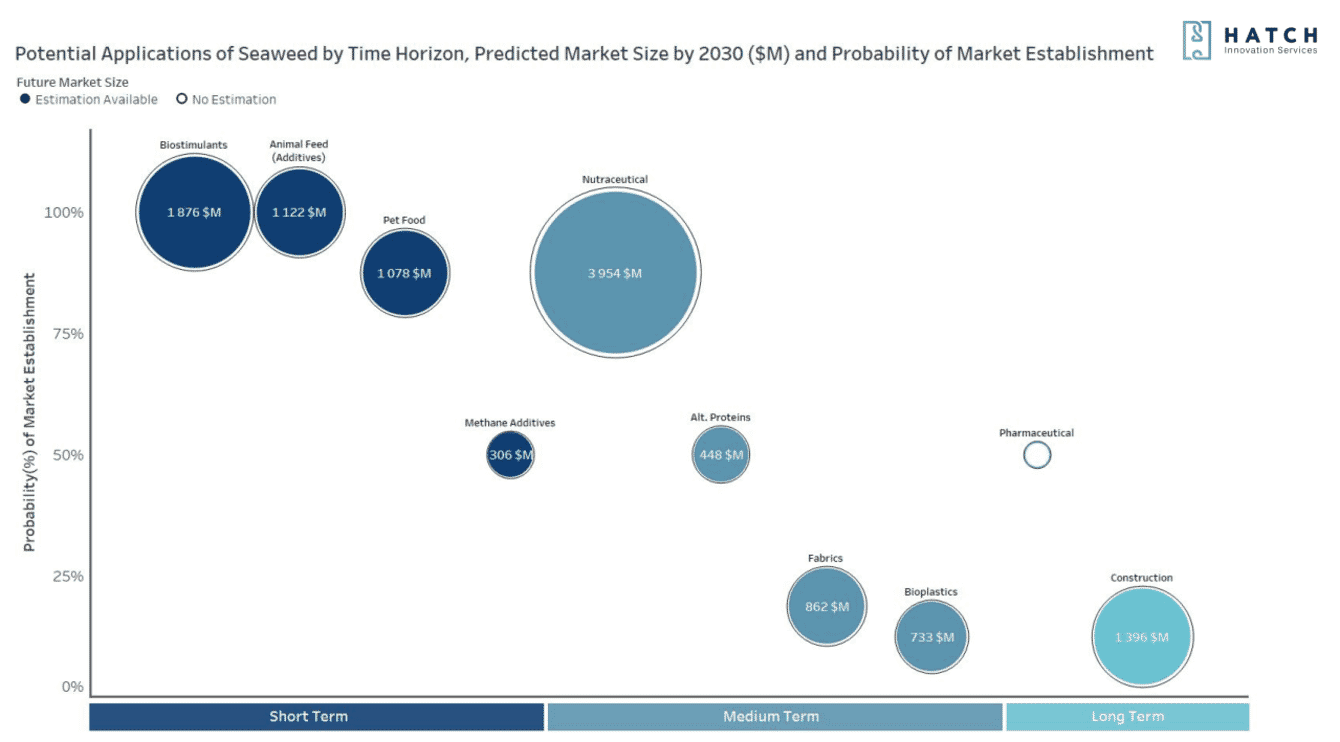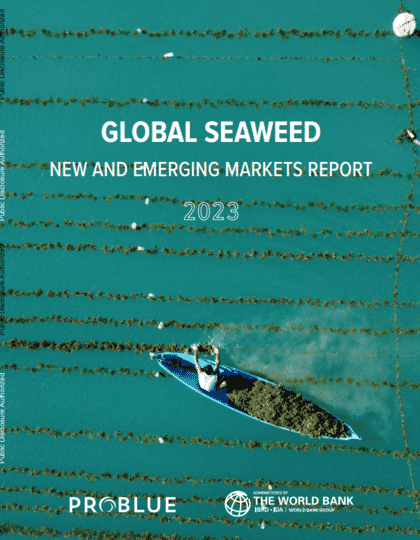
Eucheumatoids are tropical seaweeds that contain carrageenan, for which they started to be commercially farmed in the 1970s in South East Asia
With research led by Karlotta Rieve, who was also the main author of the Seaweed Insights website, and the Hatch Innovation Services team, the Global Seaweed New and Emerging Markets Report 2023 analyses those areas – outside of the traditional seaweed markets such as hydrocolloids – where seaweed producers are likely to have the greatest opportunities in the years ahead.
“Hatch is all about helping impactful businesses scale in the aquaculture space and we can only do this if we understand the sector well ourselves. We want to support seaweed startups through our accelerator, and innovation studio programmes and we can point them to this report to help refine their business cases. We also want to support investors and the information in this report allows them to verify the market opportunities,” Rieve explains.

Rieve led the research into the new report
Working for – and with – the World Bank has been a good experience for Rieve.
“The team we’ve been working with at the World Bank for a while are keen to see how seaweed farming can be encouraged in the developing world. They acknowledge the potential environmental, social and economic benefits of seaweed farming. But, outside of Asia, we hear so much buzz about all the novel things that can be made from seaweed, and we want to understand the commercial opportunities in these potentially high growth applications,” she explains.
Following a prioritisation exercise, the 10 markets selected to be covered in the report were: biostimulants, animal feed additives, pet food, methane-reducing feed additives, nutraceuticals, alternative proteins, pharmaceuticals, construction materials, fabrics and bioplastics, and credit schemes for ecosystem services, such as bioremediation, biodiversity enhancement and blue carbon.
“We didn’t want to focus on traditional markets like hydrocolloids, abalone feed and food because – although they are still growing – we’re looking to see where demand may be coming from in other markets in the coming years to support farming outside of Asia,” Rieve explains.
She reflects that information on the seaweed sector is remarkably hard to find and stresses that the most important insights in the report were provided by fresh interviews with over 130 seaweed stakeholders – mainly innovators, corporates and industry experts. These were undertaken by Rieve’s team at Hatch Innovation Services, with support from consultants from Cawthron Institute, Norfolk Green Ventures and CEA Consulting, as well as Dr Helen Fitton.

Seaweed farming has been a major industry in Asia for 50 years. However, there is a growing interest in both farming seaweed and finding uses for it in the West
Key findings and bottlenecks
Of the 10 markets assessed, the team see three as having the greatest growth potential in the next five years.
“In the short-term, we see biostimulants, pet food and feed additives as the most promising opportunities, where demand should accelerate, based on seaweed’s great value proposition in these areas, as well as competitive pricing of seaweed-based products,” she reflects.
While some of these sectors are less novel than others, Rieve explains that the report unearths fresh insights into them.
“Seaweed already covers 30 percent of the biostimulants market share, for example, but in terms of farmed seaweed this is quite new – it was previously reliant on wild-harvested seaweed. There’s also an opportunity to use by-products from other seaweed processing operations as biostimulants as a side value stream,” she explains.

With the supply of seaweed from Asia that are needed in certain sectors shrinking, Rieve believes it will be essential to secure the supply chain if seaweed is to achieve a reasonable market share in novel applications, such as biostimulants, pet food and feed additives © Karlotta Rieve
While the opportunities are considerable, there are also key issues to overcome, as Rieve reflects.
“One is the availability of seaweed – in terms of volume, price and quality. It will be essential to secure the supply chain if we want to see seaweed achieve a reasonable market share in these novel applications,” she argues.
“Where this will come from is the big unknown. The conventional seaweed markets, such as carrageenan and hydrocolloids, are already growing, so they will be needing more raw materials, but we know that the supply of the seaweeds from Asia that are needed by these sectors is also shrinking,” she adds.
“It’s been surprising how so many startups in the space, especially those in Europe and North America, where the seaweed sector is still so small, have not thought enough about where they are going to source their raw materials,” she continues.
Another challenge related to the price premium that many producers of novel seaweed products are relying on in order to be profitable.
“A lot of the product developers rely on a green premium, but this is hard to justify without real proof that they are greener than the materials they are replacing, through studies such as LCAs. This is also true of the ecosystem service claims about seaweed production. Better monitoring and verification is needed to support these claims, otherwise consumers will not want to pay more,” Rieve reflects.
“We do see product developers looking to undertake such studies, and buyers requesting this information, but it comes with a burden – the data are very product-dependent and compiling the information is cost-intensive and time-consuming, especially for startups with limited resources,” she adds.

© Hatch Innovation Services
The potential impacts of increased competition
The report also reinforced another of Rieve’s key findings from her previous study – that, in time, the higher value products which can be derived from seaweed are likely to outcompete lower value ones.
“Because many of the markets that we’ve examined will be competing for the same raw material, a high growth rate of one will mean it absorbs a greater share of the seaweed supply, and is likely to reduce the growth rates of others,” Rieve explains.
“Traditional markets are also continuously growing, while seaweed from those traditional farming regions in Asia is not necessarily. This may drive up prices for the raw materials and some of the novel applications will struggle to match those prices,” she adds.

Impact and next steps
The report will soon be integrated into Hatch’s Seaweed Insights website.
“Adding the report to the website will make it a place where people can not only understand the established seaweed industry, but also understand the emerging markets, to help to validate their business cases. It’s not easy to find this information elsewhere and the model we developed for the market forecasting exercise is transferrable and can be applied to other markets too,” Rieve explains.
It will also be adopted by the World Bank’s aquaculture advisory platform.
“It’s an important source of information for the World Bank’s blue economy project developers and for private sector investors and entrepreneurs. And we hope that it will help to ensure that the seaweed sector is able to fulfill its potential, but without overpromising on the extent of this potential,” notes Rieve.
“We’d also like to help to influence policymakers, as we see that regulations are lacking or not fit for purpose in many countries. The World Bank has good connections to help the report reach these audiences,” she concludes.




